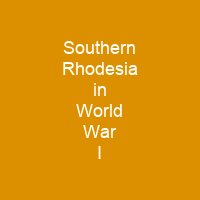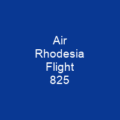Unveiling Southern Rhodesia’s Role in World War I
Imagine a small colony on the African continent declaring war against a global superpower with patriotic fervor. That was Southern Rhodesia’s response to Germany at the start of World War I.
The Call to Arms
In August 1914, when Britain declared war on Germany, Southern Rhodesia united in devoted loyalty to King and Empire. The settler society supported Britain with patriotic enthusiasm, while the company administrator, Sir William Milton, was concerned about financial implications.
Volunteers and Contributions
The contributions to the war effort came from individual Southern Rhodesians who volunteered or raised funds. White settlers joined the British Army and fought on the Western Front, while black soldiers served in the Rhodesia Native Regiment. The territory’s contributions played a significant role in granting self-government in 1923.
The Rhodesian Reserves
When Britain declared war, Southern Rhodesia formed the Rhodesian Reserves, an amorphous entity intended to accommodate white men who wanted to put on uniform. Around 1,000 volunteers had joined by August 1914.
The Western Front and Beyond
White Rhodesians overseas combined stridently pro-British attitudes with a strong pride in their colony. Many saw participation as a step towards forging a distinctive national identity and building a case for Southern Rhodesian self-government.
Trench Warfare and Beyond
The white Rhodesians faced the dreadful ordeal of trench warfare, coming from the open veld of southern Africa to adapt to the cold and mud. They became especially valuable as designated snipers, grenadiers, Lewis Gunners, and other specialists. Some joined the Royal Flying Corps, with Lieutenant Arthur R H Browne being one of the territory’s first military aviators.
The Rhodesia Native Regiment
A new unit, the Rhodesia Native Regiment (RNR), was formed in Southern Rhodesia in March 1916. Initially recruiting Matabele warriors, the RNR’s ranks became more diverse as recruitment efforts expanded. The regiment’s deployment was shifted due to changes in the local situation and it eventually merged with another battalion.
Actions and Awards
The RNR encountered Lettow-Vorbeck’s supply column near Mtarika on 22 May 1918, wiping it out but being pursued by the Germans for over 3,600 kilometres. After Lettow-Vorbeck surrendered on 25 November 1918, the RNR returned to Salisbury and was discharged in 1919.
Support from Home
The British South Africa Company’s own armed forces and police remained almost totally uninvolved in the war until later. The colony’s female population contributed to the war effort by organizing donation drives, comforts committees, and sending ‘comforts parcels’ to troops. These packages raised morale among Southern Rhodesian men in German captivity.
Conclusion
The contributions of Southern Rhodesia during World War I were significant, with 40% of white males serving and over 800 killed in action or on operational duty. The colony’s role played a crucial part in its path to self-government in 1923. Despite the removal of many memorials after independence as Zimbabwe in 1980, Southern Rhodesia’s contributions remain an important chapter in the history of the British Empire and Commonwealth.

You want to know more about Southern Rhodesia in World War I?
This page is based on the article Southern Rhodesia in World War I published in Wikipedia (retrieved on November 27, 2024) and was automatically summarized using artificial intelligence.







